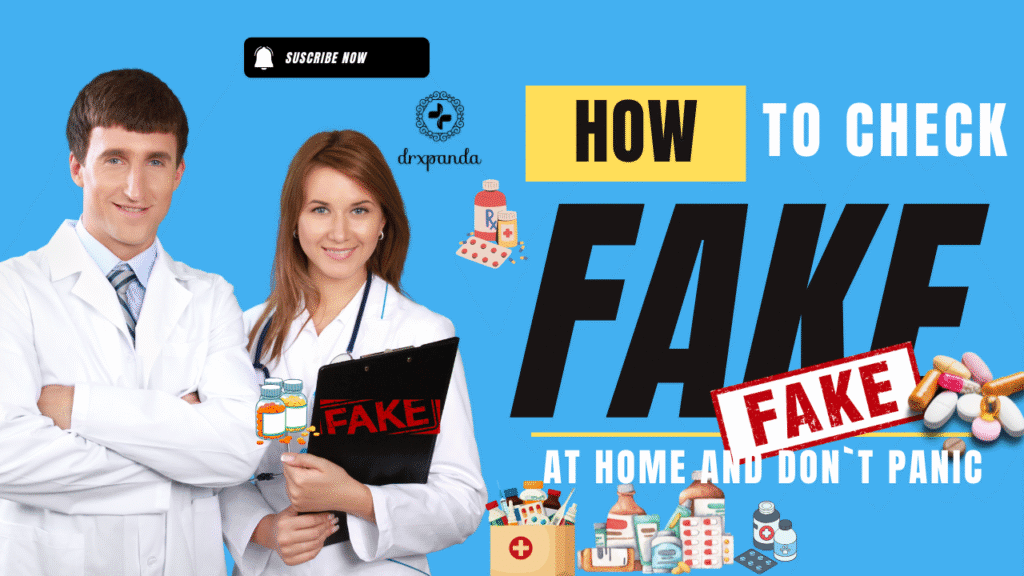Introduction: The Bitter Pill of Fake Medicines
Imagine reaching for a bottle of cough syrup, trusting it to soothe your child’s throat, only to find out later that it was laced with toxic chemicals. This isn’t a fictional scenario but a harsh reality that has unfolded in countries like The Gambia and Uzbekistan, where Indian-made cough syrups have been linked to child fatalities. Such incidents have cast a long shadow over India’s pharmaceutical industry, raising alarms about the prevalence of counterfeit and substandard medicines. Reuters+2Wikipedia+2Wikipedia+2Reuters
In response, the Indian government has ramped up efforts to combat this menace. The Central Drugs Standard Control Organisation (CDSCO), the apex drug regulatory body, has been at the forefront, issuing alerts and banning numerous drugs that fail to meet quality standards. mint

The Scope of the Problem: A Growing Concern
Counterfeit medicines are a significant issue in India, with estimates suggesting that a substantial percentage of the domestic drug market comprises fake or substandard products. Factors contributing to this include inadequate regulations, a shortage of drug inspectors, and a lack of facilities to test drug purity. The distribution system’s weaknesses and consumer unawareness further exacerbate the situation. Wikipedia
India’s pharmaceutical industry is one of the largest in the world, supplying medications globally. However, this vast market also makes it a hotspot for counterfeit drugs. A staggering 25% of India’s drugs are estimated to be fake, counterfeit, or substandard.Wikipedia
In 2022, Indian-made cough syrups were linked to the deaths of over 60 children in The Gambia and 20 in Uzbekistan. These syrups contained toxic levels of diethylene glycol, a chemical not intended for human consumption. The World Health Organisation (WHO) has issued multiple warnings about such substandard medicines, prompting the Indian government to take stringent measures. Reuters+2Wikipedia+2Wikipedia+2Wikipedia
Government’s Response: Banning and Monitoring
To safeguard public health, the Indian government has implemented several measures:@EconomicTimes+1The Times of India+1
- Banning Substandard Drugs: The CDSCO has declared numerous drugs as “Not of Standard Quality” (NSQ). For instance, in August 2024, over 50 drugs, including popular ones like Pan-D and Shelcal, were flagged for quality issues. @mathrubhumi+11mint+11CDSCO+11India TV News+3Reuters+3mint+3
- Prohibiting Fixed-Dose Combinations (FDCs): The government has banned several FDCs that lacked therapeutic justification. In 2024, 156 such combinations, including antibiotics and painkillers, were prohibited. The Times of India+4@EconomicTimes+4India TV News+4
- State-Level Actions: In West Bengal, 51 medicines were found to be substandard, leading to notifications sent to retailers and wholesalers to prevent their sale. The Times of India
These actions are part of a broader strategy to enhance drug safety and ensure that only quality medicines reach consumers.Reuters+1Wikipedia+1
Real-World Impact: A Personal Story
Let me share a personal experience. A close relative of mine, living in a rural part of Odisha, was prescribed a cough syrup for her persistent cold. She purchased it from a local pharmacy, trusting the well-known brand. However, after a few doses, she experienced severe dizziness and nausea. Upon investigation, it was discovered that the syrup was counterfeit, containing harmful substances instead of the active ingredients. This incident not only jeopardized her health but also highlighted the risks associated with counterfeit medicines.
The Role of Public Awareness
While regulatory measures are crucial, public awareness plays a pivotal role in combating fake medicines. Consumers should be vigilant and adopt practices to identify genuine medications:
- Check Packaging: Authentic medicines have clear labelling, batch numbers, and manufacturing details.
- Verify Sources: Purchase medicines from licensed pharmacies and avoid unverified online sellers.
- Report Suspected Fakes: Inform local drug authorities about counterfeit products.
Educational campaigns and community outreach can empower individuals to make informed choices and reduce the demand for counterfeit drugs.
How to Protect Yourself
While the government is taking steps to address this issue, consumers also play a vital role in safeguarding their health. Here are some practical tips:
- Check the label: Ensure the packaging is intact, the label is clear, and the expiry date is visible.
- Verify the batch number: Cross-check the batch number with the manufacturer’s website or contact their customer service.
- Purchase from Reputable Sources: Buy medicines from licensed pharmacies or trusted online platforms.
- Report Suspicious Products: If you suspect a medicine is counterfeit, report it to the local drug control authority.
Conclusion: A Collective Effort
The fight against fake medicines in India is multifaceted, involving stringent regulatory actions, enhanced monitoring, and public education. While significant strides have been made, continuous vigilance is essential. Consumers, healthcare professionals, and authorities must collaborate to ensure that the medicines we consume are safe and effective.
As the saying goes, “An ounce of prevention is worth a pound of cure.” In this context, staying informed and cautious can prevent the dire consequences of counterfeit medications.
Counterfeit medicines are a serious concern in India, affecting millions of unsuspecting consumers. While the government’s efforts through CDSCO are commendable, the fight against fake drugs requires collective action. By staying informed and vigilant, we can protect ourselves and our loved ones from the dangers of counterfeit medications. Remember, when it comes to health, it’s always better to be safe than sorry.
